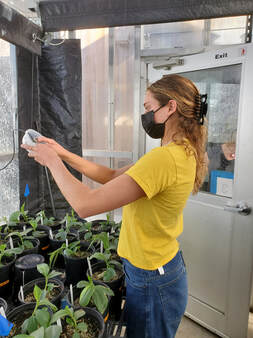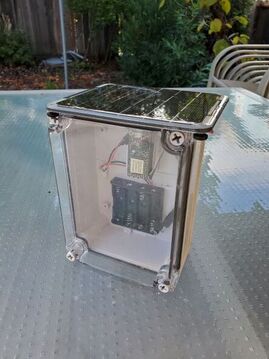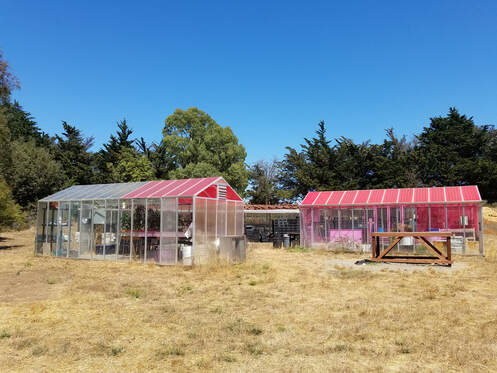Ongoing Research
Solar Thermal Storage: We are developing a novel receiver and storage unit to store heat for electricity generation. Solar radiation heats a receiver tank in a batch heater type design. A novel technological approach (proprietary information) provides the basis for the heat storage. A prototype is under development at the UC Center for Agroecology here at UC Santa Cruz.
Li-Fi enabled IoT Sensor and Control Systems: We are collaborating with colleagues in engineering at UC Santa Cruz, and in Australia and Spain, to make greenhouses more sustainable. Our goal is to use less electricity, water, fertilizer and labor to grow accessible, healthy food. Our approach is to use LiFi as a communications, power, and backscatter data retrieval system for measuring air temperature, light, humidity, air movement and other conditions within greenhouses that then allow feedback control on vents, fans, lights and so on.
Power Harvesting from Living Solar Panels: Power harvesting is a field in engineering that seeks to extract electrical current from sources of charge separation based on physical phenomena found in nature. The small currents can be used to power ICs or RTCs, charge batteries, and keep low-demand devices charged without batteries. All plants are living solar panels, and our team is working to characterize the power harvested from cactus stems, which is based on Crassulacean Acid Metabolism (CAM) operating within opaque stems. More to come on this exciting project soon.
Wavelength-Selective Solar Windows: This work examines the impacts of a new sustainable energy generation method on plants in agricultural and natural settings. Wavelength-selective solar windows use dye-infused materials to capture a portion of the photosynthetically-active portion of the visible wavelengths of sunlight. The energy is wave-guided within glass or plastic panels and directed toward photovoltaic elements annealed to the glass (or plastic.) We have built a greenhouse of these windows at the UCSC Arboretum (see photo below). The electricity generated by the windows powers the pumps, fans, and data loggers of the glasshouse.
Drought Effects on California's Diverse Ecosystems: Part of our drought research is compliant with the DroughtNet protocol for comparison to 100 other sites worldwide. The goal of the California Drought Experiment is to identify commonalities among the ways California’s ecosystems respond to drought, in order to better manage the state’s biodiversity and important functions such as carbon storage. Soil moisture and temperature, as well as air temperature and relative humidity near the ground are being monitored under the shelters. Results will help stakeholders plan for future climate impacts in California’s diverse ecosystems. In the other part of our drought research, we are working to discover how the Mojave Desert's iconic species, the Joshua Tree, is able to withstand droughts. How do they do it? Do they store water in their tree trunks or underground? We do a combination of field and greenhouse research to test how soil water affects the survival and growth of young Joshua Trees. This information will help us better understand how they will cope with increasing stress from accelerating climate change.
Climate Change at the Sierra Nevada conifer forest - Great Basin Desert ecotone: This research examines the influence of altered precipitation patterns on plant ecophysiology, communities, and ecosystem processes. In arid ecosystems typical of much of the western U.S., water availability affects plant survival, photosynthesis, growth, reproduction, and migratory potential. Experiments are being conducted in eastern California, where we have been utilizing 65-yr old snow fences constructed by Caltrans as simulations of increased and decreased snow depth scenarios, such as envisioned by some climate change models for the future. Altered snow depth results in more (or less) soil water available for shrub and tree growth in the subsequent spring and summer, effects which can then resonate to higher order processes in the ecosystem (such as litterfall, root growth, soil C storage, and soil N content.) We are also studying community-level responses to snow depth changes.




